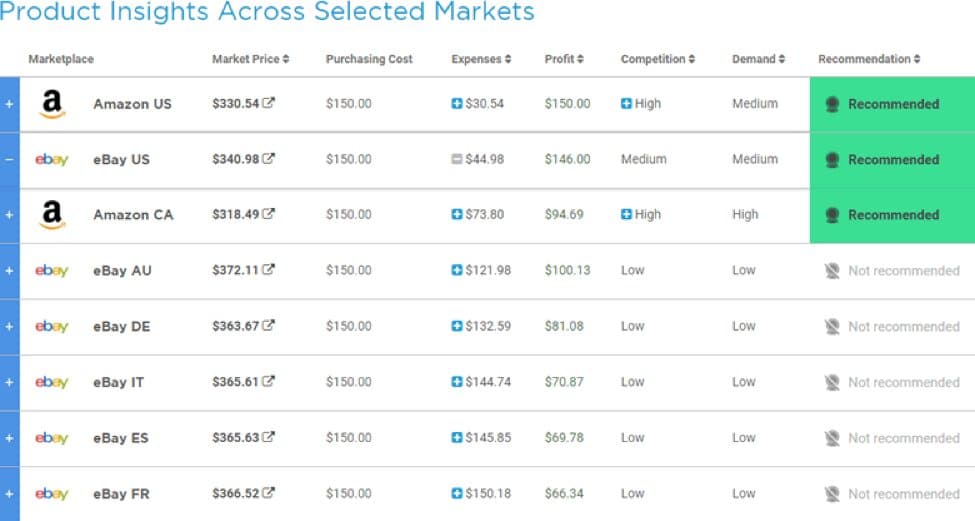Deadstock is known as the silent killer for many retailers, and it is an issue most sellers will encounter at some point in their selling career. According to CNBC, U.S. retailers experience nearly $50 billion in lost revenue from deadstock each year.
Deadstock refers to slow-selling inventory or doesn’t sell at all, which takes up shelf space and racks up storage fees. Holding on to deadstock can also mean having less space and mobility to introduce better-selling products. Also, capital tied up in deadstock most certainly means a hit to your profits.
Most often, deadstock is caused by poor purchasing decisions that were based on weak product research. No crystal ball can help e-commerce sellers successfully avoid deadstock. Still, there are some intelligent methods and actionable data that you can leverage to reduce, if not prevent, deadstock altogether.
1. Evaluate why it’s not selling
Do other stores offer your product at a lower price? Are your prices, text, and images useful, transparent, and understandable? The first step in understanding why a product has gone into deadstock status is to look at how you sell the product.
Disappointing products lead to bad reviews and customers feeling dissatisfied. Are you sure the images accurately reflect the product? Did you take the time to clearly and thoughtfully explain the product in the description?
Today, reviews are social proof. Suppose your marketing efforts have caused confusion or disappointment in the product. In that case, you will feel this when other customers decide to buy elsewhere after reading negative feedback about your product or your store.
Don’t despair. Not all hope is lost if you got off to a bad start with your product description or images. Put the ego aside and carefully consider what customers are saying about your product. Respond with kindness and ensure exchanges happen quickly and efficiently.
Furthermore, ask for feedback or send surveys to get to the root of the issue. Often surveys can be very useful when buyers are offered an incentive to provide their feedback. This is a small price to pay when customer feedback may help you solve or proactively prevent a deadstock issue.
2. Know when to call it quits
So you have deadstock that’s not moving– it’s not necessarily the end of the road. Some of the most successful sellers know when to cut losses and move on from a product that is just not selling.
Yes, it hurts. It is frustrating knowing you’ve tied up capital in an unmovable product for so long. It’s crucial to learn from your purchasing mistakes and to move on, just with a more intelligent, more informed perspective this time.
3. Buyback option
There are a few ways that sellers can move forward from deadstock. The first is to check your agreement with a manufacturer. Manufacturers often provide a buyback option if the product does not sell.
After all, they too want to be confident that they can give sellers high-quality and movable products. Of course, this option may mean enduring a restocking fee. Or it may mean having to sell to an off-price reseller to gain some revenue.
These ventures, however, are not going to cover the cost you paid for the item. They will merely reduce the loss. If your agreement does not contain a buyback option, consider this in the future when negotiating terms with a manufacturer or supplier. This will give you a safety net of sorts and lower risk on future inventory purchases.
4. Markdowns and bundle deals for deadstock
Who doesn’t love a good deal? Consider bundling a slow-moving product with another better performing one. This is an effective and creative solution to stopping a slow-moving product from becoming a full-on deadstock.
Product bundles that are well-curated provide convenience and value to online customers. Adhering to Amazon or eBay’s specific policies will ensure your customers locate product bundles easily and prevent duplicate listings. You may be enduring a loss by selling the product at a significant markdown. But, you will at least generate something from it and free up inventory space for new faster-moving products.
5. Stick to the data, not your gut
It’s a common mistake for sellers to get emotional about the products they sell and choose products based on a hunch or a trend. While this may be lucrative for a small (and lucky) percentage of sellers, for most, it is not.
Trends come and go quickly, and they can be difficult to predict. Before you know it, copycat products have entered the market and hurt, or reduced completely, the need for your product. It’s imperative that sellers listen to the data and not just to their gut. Data provides sellers with a solid foundation to make intelligent and well-informed purchasing decisions. This will dramatically reduce the risk of deadstock.
Actionable data insights into marketplace prices, product demand, tax estimations, profits, expenses, and product selling history can be instrumental in the product research phase. What once took many hours of research now can be done quickly and accurately within a matter of minutes thanks to automatisation. Imagine analysing up to 200 products at one time and understanding which products and in what markets lay high profitability opportunities. Data does not lie, and decisions based on crucial actionable data points will be infinitely more secure than those found on a whim or a gut feeling.

6. Act on data related to deadstock
So far, we’ve discussed a few creative solutions to deadstock– from bundle deals to manufacturer buyback. But at the end of the day, the only way to effectively deal with deadstock is to make every effort to avoid it in the first place.
With the proper tools, projections can be supported by data-driven decisions. To fully understand where your business needs development or refinement, take a look at your price lists, potential vendors, and suppliers lists. To source products efficiently, sellers will need to spend valuable time and energy reviewing hundreds or thousands of product lists to perform comprehensive product research.
Unfortunately, such endeavours are not always accurate– after all, you’re only human. Where to go if your product research has not provided enough quantitative and quantifiable data with which to make actionable purchasing decisions?
Utilise a product research tool that automates the process and gives you accurate insights quickly. With the correct data, sellers can make informed sourcing decisions and significantly reduce overstock. To buy more responsibility upfront, sellers should rely on crucial data points that have the power to generate change within their business.
A product that will sell well in Amazon Germany may not translate whatsoever to the market of Amazon U.S. Or, on the other hand, you may be sitting on a product that’s not performing well in your specific market but has seen growth and strong product history in a different market abroad. These insights will help you avoid wasting money on products that will be slow-moving or too difficult to sell.

Conclusions
By merely exploring different global marketplaces and understanding product history, taxes, customs, and fulfilment fees, sellers can more accurately judge the best marketplace for their specific product. This shouldn’t be a shot in the dark; rather a well-informed decision backed up with quality data.
Collecting massive amounts of data is now a challenge that many online sellers can handle and effectively thanks to developments in inventory software management or useful product research solutions. Sellers that have successfully learned how to leverage critical data points into better strategic business decisions for reducing deadstock and pinpointing high profitability products have secured for themselves a profitable asset and a promising future.





